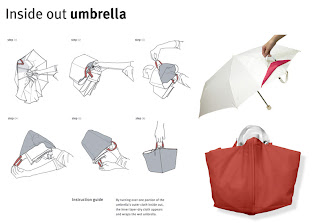
As The Risk Society and The Beyond points out, risks are invisible and lurk in outside of the capacity of human perception. To tell this immaterial risk, giving ‘shock’ to people is a usual way of embodying it. Design like "Dooms Day Clock" gives a ‘shock’ to people with visualised risks. However, people might be going to start to be acclimated to even the ‘shocks’.
Is there the way of telling risks without using ‘shock’? Design for risks can be sometimes hidden and invisible just as like risk itself. One example for it is ‘the preparation for a risk by alternative functions’ and another example is ‘the communication for a risk veiled by humour’.
The preparation for a risk by alternative functions is easier to fit in with everyday life and people will not forget it unlike the place where an extinguisher is, for example. Metro stations in some cities such as
The communication for a risk veiled by humour is more attracts people and is less got bored and accustomed to than just shocking communication. Advertisements of insurance companies are designed for telling risks (and letting people join to the insurance).
I have found some.
http://youtube.com/watch?v=yuiG78Al3yc
http://youtube.com/watch?v=BFMJ8CNs-7o&eurl=http://yoichi.typepad.jp/blog/2006/11/post_6ce4.html
http://media1.adforum.com/zrIf58670C/A/AL/ALIA_19779/ALIA_19779_0047063W.MPG
They use humour as an effective way of telling risks without 'shock' even though there are some other purposes in the advertisements.
(How much we can ‘laugh’ about the risks and threats might be another topic.)
To embody the invisible risks is necessary to inform them to the people. However, communication using ‘shock’ or object just for “unreal” emergency will lose its impact and message and be forgotten. Design melting into existing environment and to be ‘real’ for our everyday life is needed to address and communicate with the unperceivable risks which might become real tomorrow.
Image:
YANKO DESIGN (http://www.yankodesign.com/index.php/2008/01/23/wet-umbrellas-no-more/)
Reference :
Barbara Adam, Ulrich Beck and Joost Van Loon, eds., The Risk Society and Beyond: Critical Issues for Social Theory (





